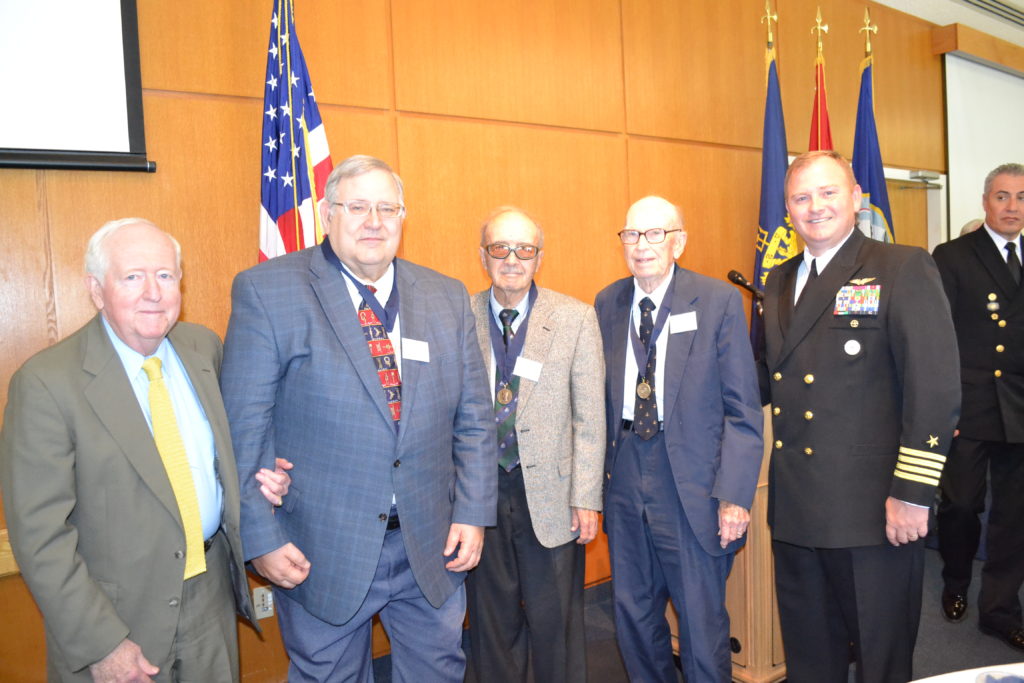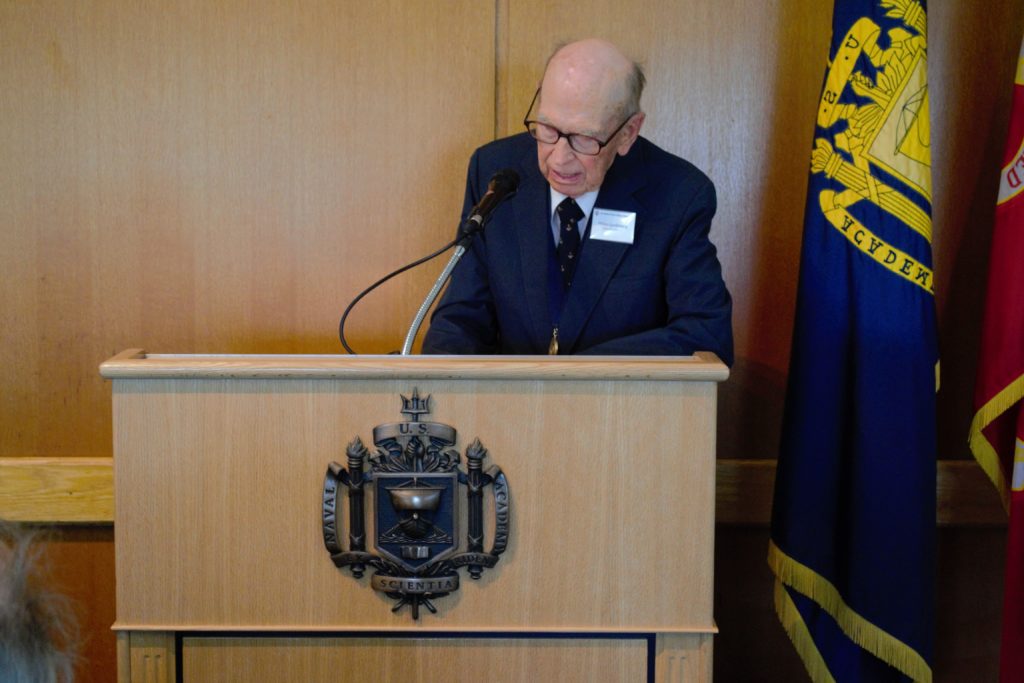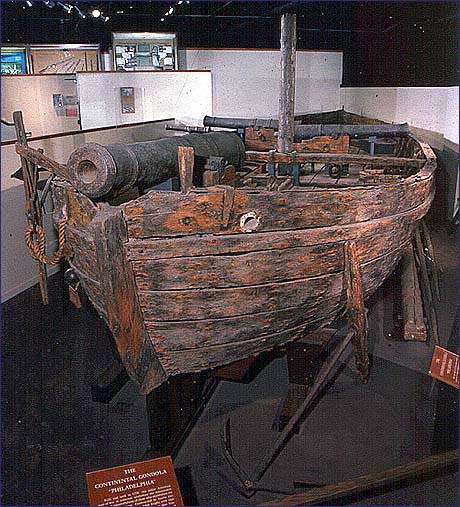By NHF Historian Dr. Dave Winkler

Early on October 3rd, the naval history community lost one of its finest with the passing of Dr. Philip Karl Boraas Lundeberg. He was 96. Along with James Bradford and William Still, he was the first to be honored with the Naval Historical Foundation’s highest award in recognition of a lifetime of achievement in naval history – the Commodore Dudley Knox Medal. Presented at the 2013 McMullen Naval History Symposium at the U.S. Naval Academy, the medal recognized his outstanding career as not only a naval historian, but also as a curator for the Smithsonian Institution. In addition, as a member of “the Greatest Generation” Lundeberg helped shape naval history as, detailed below.
Naval historians focus on naval history (which is what they are supposed to do!). Ironically, the process of capturing and preserving naval history is often as interesting as the history itself and is overlooked as historians, being the modest folks they are, rarely document their activities. We are fortunate that in 2002, Dr. Lundeberg sat with our staff historian to provide insights about his career as a naval officer, historian, and curator, studying under Samuel Eliot Morison and others, teaching at St. Olaf College and the Naval Academy, and then serving as a naval curator at the Smithsonian.

Born in Minneapolis, Dr. Lundeberg taught history at St. Olaf College and the U.S. Naval Academy before coming to the Smithsonian in 1959 as associate curator in the Department of Armed Forces History. There he developed naval exhibits for the National Museum’s new Hall of Armed Forces History, including that of the Continental Gondola Philadelphia, a rare survivor of the American Revolution that he brought from Lake Champlain in 1961. Working with Howard I. Chapelle, he directed the construction of three-score scaled models of American naval vessels for the chronological armed forces exhibit and special exhibitions. In 1981, Dr. Lundeberg organized the Smithsonian exhibition commemorating the Yorktown bicentennial, “By Sea and By Land: Victory with the Help of France,” mounted in the Smithsonian castle with the collaboration of the Embassy of France. He also prepared naval elements for exhibits elsewhere in the Institution, including “Centennial 1876;” “The Japan Expedition of Commodore Matthew C. Perry;” and following his retirement, “Magnificent Voyagers: The U.S. Exploring Expedition, 1838-1842.”
A summa cum laude graduate of Duke University early in 1944, he was commissioned at the USNR Midshipmen’s School at Columbia University. He served with destroyer escorts, being the youngest of three officer survivors of USS Frederick C. Davis, last American warship sunk in the Battle of the Atlantic during World War II. Thus motivated, he completed his doctoral dissertation, American Anti-Submarine Operations in the Atlantic,1943-45. He taught naval and diplomatic history at Annapolis before being called to the Smithsonian, where his duties included not only research, exhibits and collections management but also staff training in museum security. His scholarly works, derived from a survivor’s perspective, focused largely on the emergence of undersea technology and operations, including “Undersea Warfare and Allied Strategy in World War I,” in the Smithsonian Journal of History (1966); The Continental Gunboat “Philadelphia” (1966, pictured below) and Samuel Colt’s Submarine Battery (1974). In 1995 he published a new edition of The Gunboat “Philadelphia,” bringing human dimension to the history of that venerable survivor, made possible by discovery of her crew’s final muster roll.

At the Smithsonian, Lundeberg encouraged collaboration between museum, academic and government historians, preparing a series of articles on “The Museum Perspective” for the historical journal Military Affairs. He served as vice president and president of the American Military Institute (1968-73) and of the United States Commission on Military History (1974-1981), directing conferences at the Smithsonian of the International Commission of Military History on the themes of “La Technique Militaire” (1975) and “Soldier Statesmen of the Age of the Enlightenment” (1982). He was elected organizing chairman of the International Congress of Maritime Museums at London in 1972, served as Chairman of the Council of American Maritime Museums (1976-1978) and traveled overseas periodically as secretary of the International Committee of Museum Security of ICOM. In 1970 he edited the Bibliographie de l’Histoire des Grandes Routes Maritimes: Etats Unis d’Amerique for the International Commission of Maritime History. A founder of the North American Society for Oceanic History, he received the Society’s K. Jack Bauer Award in 1998 for Distinguished Service on behalf of maritime history. Receiving his Knox Medal in 2013, Lundeberg continued to work on what he dubbed a “microhistory” of the events surrounding the sinking of the Frederick C. Davis publishing an account of the harsh treatment of the German POWs from the submarine that had shot the torpedoes that killed many of his shipmates for the International Journal of Naval History.
Married to Eleanore Berntson Lundeberg in 1953, he has sung with her in Lutheran choirs in the Washington area for some fifty years. He also has a son Karl Fredrik and two granddaughters. This year marked Dr. Lundeberg’s 70th year as a member of the Naval Historical Foundation. He will be missed.
Click the link below for Dr. Winkler’s Oral History Interview with Dr. Lundeberg.
files.constantcontact.com/9ba288dc001/7920bd73-04d6-4ca5-b039-a127c5fb4963.doc
Next week on Thursday Tidings, we will be looking at the life of Ensign Jessie Brown, one of the first African American Naval Aviators. We will also be highlighting the 71st anniversary of the first group of women to be commissioned in the Active Duty Navy.

